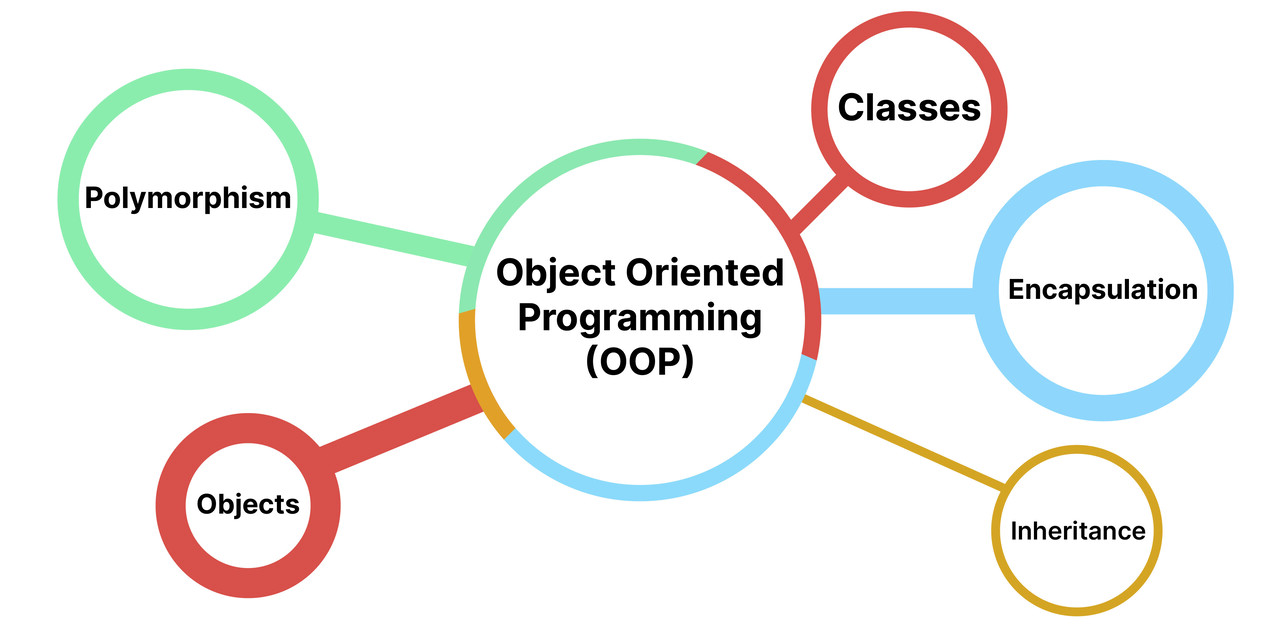Concepts of Object Oriented Programming

Object-Oriented Programming (OOP) is based on several fundamental concepts that help in organizing and structuring code. These concepts provide a way to model real-world entities and their interactions in software development. Here are the key concepts of Object-Oriented Programming:
-
Class:
- A class is a blueprint or template that defines the attributes and behaviors common to all objects of that type.
- It serves as a blueprint for creating objects with specific characteristics and functionalities.
- Example:
Car class with attributes like make, model, and methods like startEngine().
-
Object:
- An object is an instance of a class, representing a specific occurrence of that class.
- Objects have state (attributes/data) and behavior (methods/functions).
- Example: An instance of the
Car class could be a specific car with a make, model, and the ability to start its engine.
-
Encapsulation:
- Encapsulation is the bundling of data (attributes) and the methods (functions) that operate on that data within a single unit (class).
- It hides the internal details of the object and exposes only what is necessary.
- Encapsulation helps in achieving data security and code organization.
-
Inheritance:
- Inheritance is a mechanism that allows a class (subclass or derived class) to inherit properties and behaviors from another class (superclass or base class).
- It promotes code reuse and establishes a hierarchy among classes.
- Example: A
Truck class inheriting from a more general Vehicle class.
-
Polymorphism:
- Polymorphism allows objects to be treated as instances of their parent class, promoting flexibility and code reuse.
- It can be achieved through method overriding (changing the behavior of a method in a subclass) and interfaces.
- Example: A
draw() method in a base class can be overridden in subclasses like Circle and Rectangle.
-
Abstraction:
- Abstraction involves simplifying complex systems by modeling classes based on the essential properties and behaviors they have in common.
- It hides the implementation details and focuses on the relevant aspects of an object.
- Abstraction provides a clear separation between what an object does and how it achieves its functionality.
These concepts work together to provide a powerful and flexible programming paradigm. OOP promotes modular and organized code, making it easier to understand, maintain, and scale. By modeling software entities after real-world objects, OOP helps developers design systems that are more intuitive, reusable, and extensible.
Thank you.